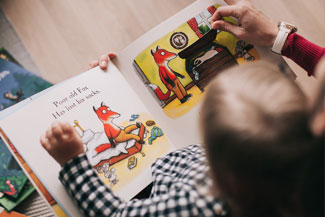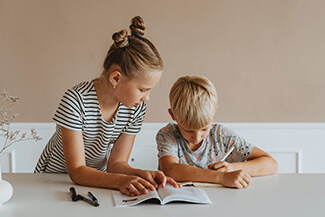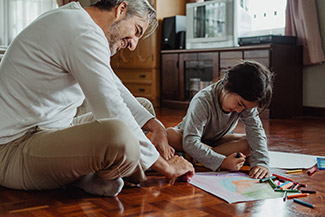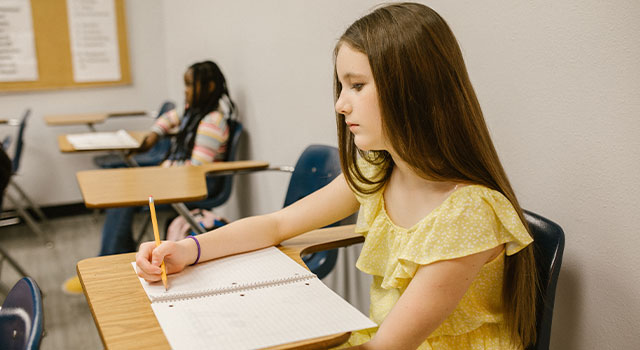What Is Vision Therapy?
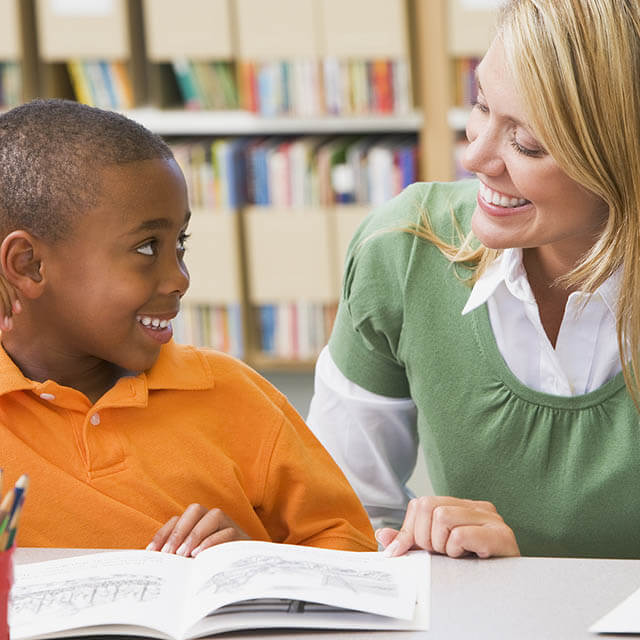
20/20 vision is but ONE of over 17 important visual skills required to function efficiently to perform well in school or sports.
Children with reduced vision skills may work harder than their peers, yet be unable to achieve the results they seek. Their poor vision skills may also cause them to struggle to concentrate throughout the day.
Vision therapy is an evidence-based program to effectively strengthen the specific vision skills impacting your child and has been clinically proven to increase reading levels, enhance comprehension, maintain longer attention spans and even improve sports performance.
See a difference in your child’s school performance!
If your child has been diagnosed with a reading or learning difficulty or just not reaching their potential at school, or on the sports field, schedule an appointment with Dr. Angela Bergin in Charlotte for a functional eye exam. Over 17 visual skills will be assessed, including eye tracking, reading fluency, focusing and depth perception.
Don’t let your child suffer in silence.
Vision therapy might just be the solution you have been seeking. Talk to us! We’ll help your child maximize their visual skills and resolve any underlying visual problems impacting your child.
How To Know If Your Child Needs Vision Therapy

If your child has any of the following, vision therapy can significantly change his or her life for the better.
- Skipping words or lines while reading
- Still not reading at grade level
- Confusing the letters b, d, p and q
- Rubbing eyes or closing one eye when reading or doing near work
- Holding books too closely or tilting head when reading
- Eyestrain or headaches with schoolwork or computer use
- Difficulty with reading comprehension
- Blurred or double vision when reading
- Avoiding homework
- Poor attention span
- Fidgeting and squirming in the chair
Help Your Child Reach Their Potential With Vision Therapy
At Excel Eyecare OD PA we use a holistic approach to vision care. In addition to the usual eye exam, we also test the entire visual system (functional vision exam) to check that it has the developmental maturity, strength, and stamina to function optimally throughout the visual tasks performed on a daily basis.
Once we identify any vulnerable areas within the visual system that could interfere with reading and learning, we develop an effective vision therapy regimen made of individually-tailored eye exercises made to improve visual functions and retrain the brain to interpret visual input more accurately.
Contact Excel Eyecare OD PA in Charlotte today for a functional eye exam, or visit us with your concerns regarding your child’s vision, and we’ll be sure to find the best way to treat his or her visual problems.
Eye Exercises for Strabismus
There are a number of eye exercises for strabismus that your eye doctor may help you perform in-office or ask you to perform on your own at home as part of your personalized vision therapy regimen. Among the most common and effective exercises include:
Specialized computer programs. One of the leading issues with strabismus is that it often interferes with depth perception and with the ability to see in three dimensions. This occurs because the patient’s eyes can’t focus on the same object at the same time. Some eye doctors will use specialized virtual reality and augmented reality programs and video games to help correct this in a fun and engaging way. Your doctor will be able to customize these games for you, and they aren’t usually games you can find to play at home.
The Brock string. Who knew 5 feet of string and three beads of different colors could help your sight so much? The beads are set equal lengths apart on the string and one end of the string is held to your nose. You then tie the other end to something stationary, like a railing, fence, or chair. Focusing on the bead closest to your nose, try to move the string until you see the beads as a single object at the X where the strings meet. Then shift your focus to the next bead and repeat.
Pencil push-ups. This is an easy, cost-free exercise that you can do anywhere. Hold a pencil or similar object about arm’s length from your face. Slowly move the pencil toward your nose, following it with your eyes to keep it in focus. Continue moving it closer until you can no longer keep it in focus. When you start to see two pencils, start moving them away from your face again slowly. You should do this exercise several times a day. Though this exercise has not been shown to be effective on its own to fix strabismus, it can still be an easy and effective addition to a wider vision therapy regimen.
Barrel cards. This can be an effective technique for working on convergence-based visual skills. Each card has three barrels drawn on it. On one side of the card are red barrels, and on the other are green barrels, all different sizes. To use these as part of an exercise, you would hold the card vertically against the bridge of your nose with the smallest barrel closest to you. The card should be vertical, with one eye looking at the red barrels and the other eye looking at the green barrels. You should focus on the barrel farthest from your nose, and should be able to see the red and green barrels come together to form one image. Hold focus for 5 seconds, and then start to focus on the middle circle and hold again for 5 seconds. Repeat until you’ve done all three barrel sizes.
These and other exercises for Strabismus can help strengthen the connection between your eyes and your brain, and significantly improve your vision.
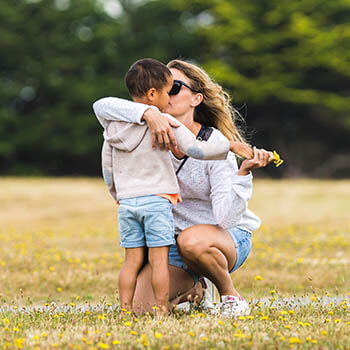
What Parents Are Saying About Us
Vision Therapy May Be What Your Child Needs | FAQ
Improve your child’s confidence levels with vision therapy!
Vision therapy is a non-surgical treatment program that is typically compared to physical therapy, but for the eyes and brain. Vision therapy uses exercises, lenses, specific instruments, and occlusions to enhance visual function.
All vision therapy programs are customized and can result in significant lasting improvements within a relatively short period of time. To learn more, contact us today and discover how we can help your child improve their performances both in school and on the sports field.




